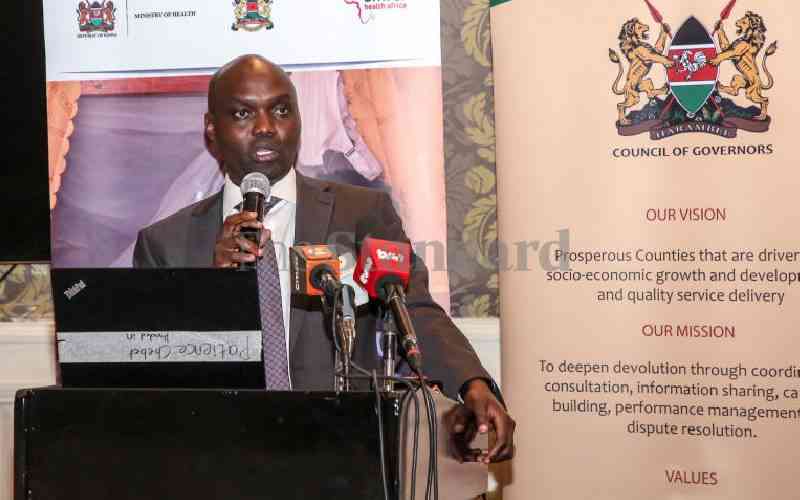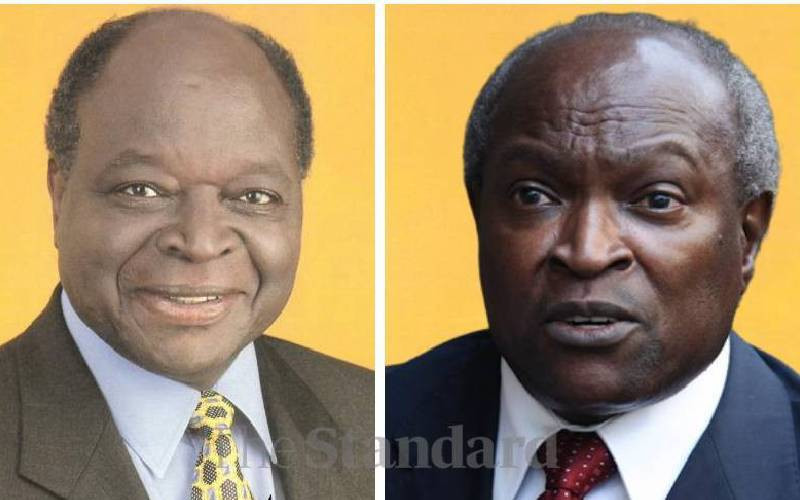
The dark tan leaves of the miraa tree, their flexible branches bent by years of human weight pulling at them during harvesting, dot the Nyambene highlands in Meru County.
Each day, hundreds of residents jam the constituency’s shopping centres and large markets to trade in these twigs which rake in a fortune for the region. In fact, money circulation here is better than anywhere else in the cash crop growing region of the central highlands.
The land under miraa in this region is estimated to be 70,000 hectares with estimated export earnings of Sh6.9 billion in 2011.
Miraa has become a campaign tool, especially in the politically maverick Nyambene region where the crop is widely grown.
Literary every presidential aspirant in recent years has been photographed chewing or pretending to chew the stimulant. That would have been unimaginable during President Mwai Kibaki’s tenure or his predecessor, Daniel arap Moi.
According to former Igembe South MP and former Cabinet minister Jackson Kalweo, there has never been as much political interest in miraa as is currently the case.
“The current generation of politicians has realised that using miraa attracts more attention because of the increased number of users,” said Kalweo, who is now a full-time farmer in Antubochiu near Maua town.
“Today, more people, especially the younger generation, chew miraa while others engage in its trade. The numbers are enough to make any forward-thinking politician to sit up and pay attention to this plant.”
Kalweo said that while in the past growing the plant had its own challenges, they were not as many as those experienced today. He said the plant was politicised in the 1970s when then Attorney-General Charles Njonjo classified it as a drug.
Didn’t oppose
The former MP said when the motion was brought before Parliament, he did not oppose it since he knew he could not win against the majority who were supporting it.
“When I went back to my constituency, farmers and traders brought their harvested miraa to my home and asked me to eat it since I did not fight the motion in Parliament. I was, however, able to calm them down and arrange a delegation to go see the president. We discussed the issue and he announced that miraa should not be treated as a drug,” Kalweo said.
The former legislator said an Arab trader first introduced the idea of trading in miraa. He said in 1947, the trader came to Kangeta market and started buying the plant from local farmers. The returns for the farmers were good and as the trade grew, the Arab expanded his business from just taking the plant to Nairobi and Mombasa and started transporting it to Kampala and Dar es Salaam.
According to former Ntonyiri MP Joseph Muturia, while there was not much politics involving miraa during President Moi’s era, he nonetheless played a pivotal role by talking to the Somali government in the 1990s when it wanted to ban its sale in the country.
Stay informed. Subscribe to our newsletter
“We can say all the three former presidents - Jomo Kenyatta, Daniel arap Moi, and Mwai Kibaki - did something for miraa but it is President Uhuru Kenyatta who has done what miraa farmers and traders will never forget,” he said.
In June last year, President Kenyatta appointed a 14-member task force to look into the development of the miraa industry. This came after an export ban of the commodity to the European market left farmers with excess stock.
The President also went a step further and signed into law a Bill that categorises miraa as a cash crop, effectively opening the door for the plant to benefit from government budgetary funding.
The appointed team was also tasked to look into the ills afflicting the miraa sub-sector and make recommendations. And just last week, the team, led by chairman Geoffrey Nchooro M’mwenda, was at State House to present its findings to the President.
The team reviewed available literature on the status of miraa in 29 countries and found that it was illegal, prohibited, or controlled in 21 of them, including UK, Germany, France, Canada, and the US. It is legal in Ethiopia, Somalia, Djibouti, Kenya, Uganda, Israel, and Yemen.
The task force also found that several attempts have been made to subject miraa to international control.
Minimal threat
“But a comprehensive review by the World Health Organisation’s Expert Committee on Drug Dependence in 2006 determined that the potential for abuse and dependence is low and the threat to public health insignificant to warrant international control,” the task force report said.
It also notes that scientific studies on miraa have revealed the presence of 62 alkaloids. The other active ingredients include vitamins, proteins, essential oils, and minerals.
“Most studies on the crop have tended to focus on the presence of cathine and cathinone, its effects on human health, and social harms on consumers and communities.”
These two compounds, cathine and cathinone, are internationally controlled under the UN Convention on Psychotropic Substances (1971) and the Convention Against Illicit Traffic in Narcotic Drugs and Psychotropic Substances (1988).
Miraa is, however, not subject to international control under the two conventions. The emphasis on the conflicting health effects and social harms on consumers without scientific evidence has contributed to the low penetration and systematic shrinking of the miraa market in the international arena.
Miraa is grown on a commercial basis in Kenya, Yemen, Ethiopia, and Eritrea. In parts of Ethiopia, particularly in the highlands of the Hararghe region, miraa is of extreme importance to poor rural households because it is drought-tolerant and has low production costs.
The task force has recommended that a request be sent to the UN for an interpretive advisory opinion on the 1971 and 1988 conventions as regards the active ingredients in miraa
It also wants the development of a common external tariff for miraa to facilitate international trade and promotion of the crop and its products through international trade fairs for penetration into new markets.
It wants a state agency in charge of the sub-sector - Kenya Miraa Development Agency - and a regulatory framework established.
The task force wants support for the establishment of miraa farmers’ and traders’ saccos with take-off capital to provide credit to meet immediate financial needs including the redemption of leased miraa farms.
It also called for the establishment of a research institute in the main miraa growing areas to generate and disseminate technologies, information, and knowledge on miraa.
In the detailed budget that the team sent to the government, it asked for Sh1.2 billion to actualise investment in the sub-sector. It got it.
 The Standard Group Plc is a
multi-media organization with investments in media platforms spanning newspaper
print operations, television, radio broadcasting, digital and online services. The
Standard Group is recognized as a leading multi-media house in Kenya with a key
influence in matters of national and international interest.
The Standard Group Plc is a
multi-media organization with investments in media platforms spanning newspaper
print operations, television, radio broadcasting, digital and online services. The
Standard Group is recognized as a leading multi-media house in Kenya with a key
influence in matters of national and international interest.
 The Standard Group Plc is a
multi-media organization with investments in media platforms spanning newspaper
print operations, television, radio broadcasting, digital and online services. The
Standard Group is recognized as a leading multi-media house in Kenya with a key
influence in matters of national and international interest.
The Standard Group Plc is a
multi-media organization with investments in media platforms spanning newspaper
print operations, television, radio broadcasting, digital and online services. The
Standard Group is recognized as a leading multi-media house in Kenya with a key
influence in matters of national and international interest.









